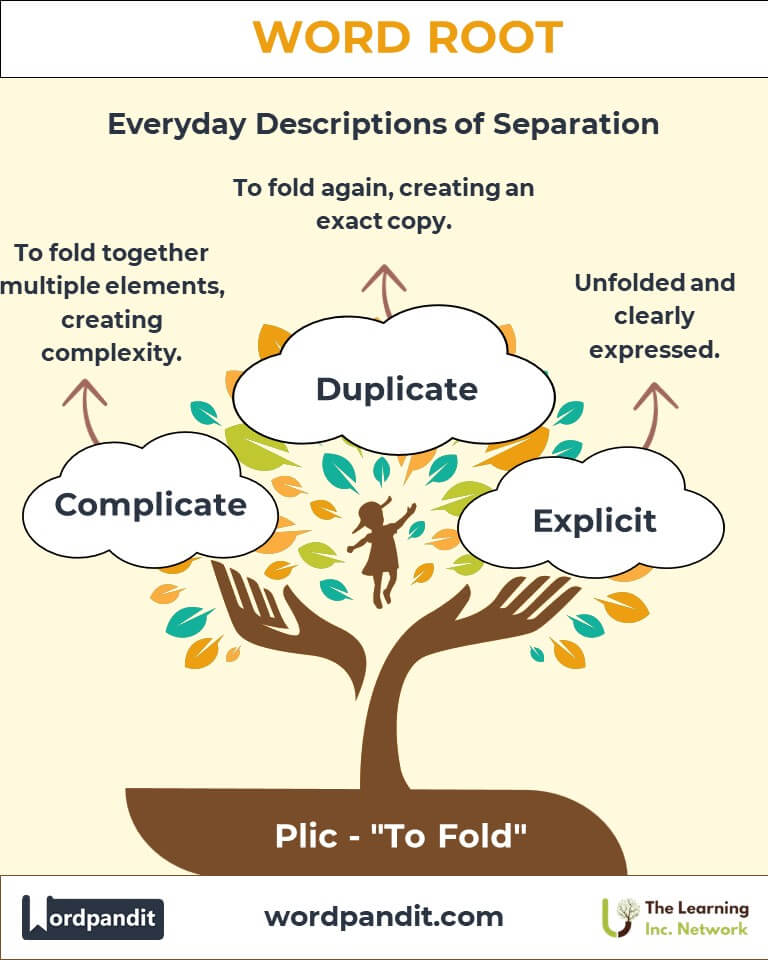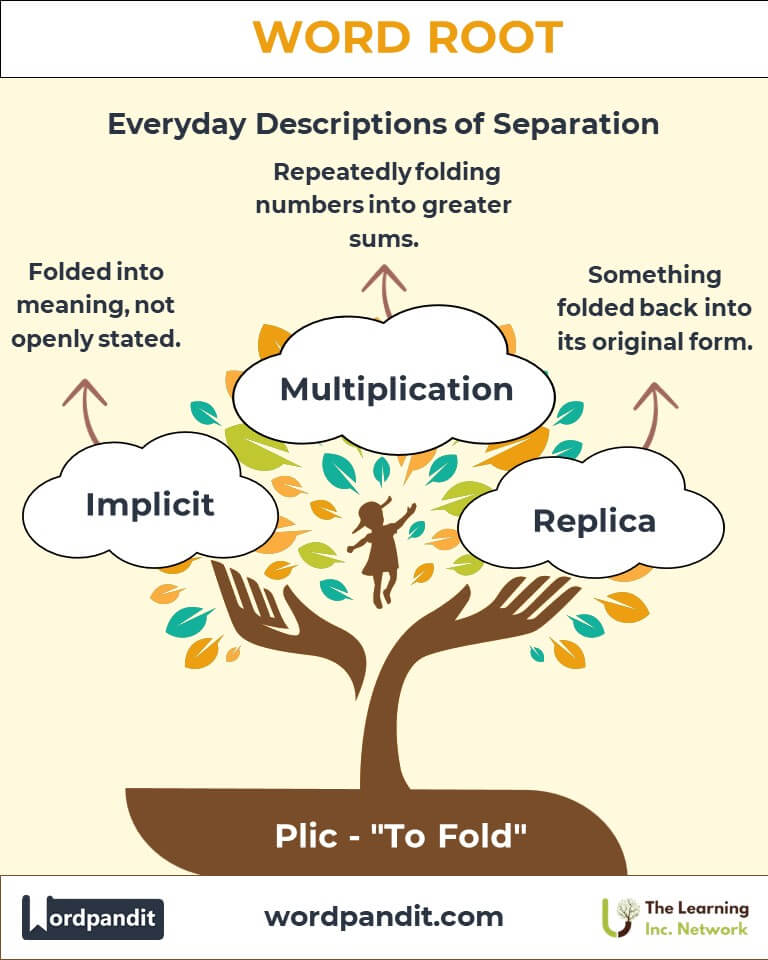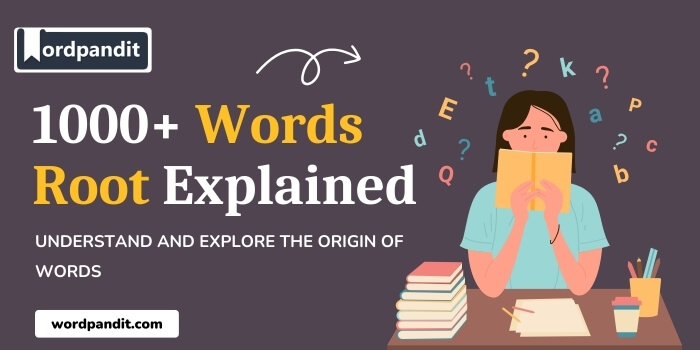Plic: The Art of Folding in Language and Beyond
Discover the fascinating world of the root "plic," originating from Latin and meaning "to fold." From everyday words like "complicate" to sophisticated terms like "implicit," "plic" weaves its way into our language, adding layers of depth and nuance to communication across fields.

Table of Contents
- Introduction: The Essence of "Plic"
- Etymology and Historical Journey
- Mnemonic: Unlocking the Power of "Plic"
- Common "Plic"-Related Terms
- "Plic" Through Time
- "Plic" in Specialized Fields
- Illustrative Story: "Plic" in Action
- Cultural Significance of the "Plic" Root
- The "Plic" Family Tree
- FAQs about the "Plic" Root
- Test Your Knowledge: "Plic" Mastery Quiz
- Conclusion: The Living Legacy of "Plic"
1. Introduction: The Essence of "Plic"
What connects the simplicity of a folded napkin to the complexity of a philosophical argument? The answer lies in the root "plic." Derived from the Latin word plicare, meaning "to fold," this versatile root forms the backbone of words that describe folding, intertwining, or layering concepts—both literally and metaphorically.
Whether in language, science, or art, "plic" reminds us that folding often conceals hidden layers of meaning or purpose.

2. Etymology and Historical Journey
The root "plic" originates from the Latin plicare, meaning "to fold." Over time, it evolved through various prefixes and suffixes, giving rise to words that describe both physical folding and abstract complexity. From medieval manuscripts intricately folded for safekeeping to Renaissance texts exploring implicit ideas, "plic" shaped our understanding of hidden meanings.
The journey of "plic" reflects humanity’s fascination with layering, whether in material forms like fabric or intellectual constructs like ideas.
3. Mnemonic: Unlocking the Power of "Plic"
Picture an origami swan: a flat sheet of paper intricately folded into a beautiful form. This imagery captures the essence of "plic"—to fold and reveal hidden complexity.
Mnemonic Device: "Plic folds the flat into the fancy, from simplicity to sophistication."
4. Common "Plic"-Related Terms
- Complicate (kom-pli-kayt): To make something more intricate or difficult.
Definition: To fold together multiple elements, creating complexity.
Example: "Adding too many details can complicate the design." - Implicit (im-plis-it): Understood without being directly stated.
Definition: Folded into the meaning, not openly expressed.
Example: "Her tone carried an implicit warning." - Duplicate (doo-pli-kayt): To make an exact copy.
Definition: To fold again, creating a replica.
Example: "The artist made a duplicate of the original painting." - Explicit (ek-splis-it): Clearly expressed or stated.
Definition: Unfolded and laid out plainly.
Example: "The instructions were explicit, leaving no room for doubt." - Replica (rep-li-kuh): A copy or reproduction of an object.
Definition: Something folded back into its original form.
Example: "The museum showcased a replica of the ancient artifact." - Multiplication (mul-ti-pli-kay-shun): The process of increasing numbers.
Definition: Repeatedly folding numbers into greater sums.
Example: "Multiplication simplifies the addition of large quantities."
5. "Plic" Through Time
- Complication (16th Century): Initially used in medicine to describe coexisting ailments, this term later expanded to denote complexity in other fields.
- Explicit (17th Century): Originally tied to manuscripts, it described content unfolded for clarity. Now emphasizes clear communication in any context.
6. "Plic" in Specialized Fields
- Medicine: "Complicated fractures" describe injuries involving multiple layers of damage.
- Technology: Data duplication ensures backups and system reliability.
- Philosophy: Implicit arguments rely on folded assumptions, encouraging deeper examination of hidden premises.
7. Illustrative Story: "Plic" in Action
Anna, a designer, faced a challenge: creating a foldable brochure that conveyed layers of information clearly. As she folded and refolded prototypes, she realized the physical act of folding mirrored her thought process. By embracing the complexity of "plic," she crafted a design that unfolded into an elegant presentation—proving that simplicity can emerge from even the most intricate folds.
8. Cultural Significance of the "Plic" Root
The concept of folding appears in many cultures, from Japanese origami to the folds of a sari. Metaphorically, "plic" represents hidden depths in literature, such as the "folded" layers of meaning in poetry. The root inspires linguistic creativity and cultural expressions in art, fashion, and thought.

The "Plic" Family Tree
- Ply (Latin: fold): Refers to layers in materials like wood or fabric.
- Example: "Plywood is made of multiple thin plies."
- Flex (Latin: bend): Indicates movement or adaptability.
- Example: "Flexibility is a key trait in athletes."
- Flect (Latin: bend): Shares similarities with "plic" in describing curving or folding.
- Example: "Reflective surfaces bend light back to the viewer."

FAQs About the "Plic" Word Root
Q: What does "plic" mean?
A: The root "plic" comes from the Latin "plicare," meaning "to fold." It forms the basis of words describing both physical folds (e.g., replicate) and metaphorical folds, such as complexity or hidden meanings.
Q: How does "plic" relate to complexity?
A: Complexity arises when multiple elements are folded together or intertwined. Words like "complicate" embody this idea, describing situations with multiple layers or interdependencies.
Q: What is the difference between "explicit" and "implicit"?
A: "Explicit" refers to something clearly unfolded for understanding, while "implicit" means something folded within or implied, requiring interpretation to uncover its meaning.
Q: How is "plic" used in mathematics?
A: In mathematics, "plic" appears in terms like "multiplication," which involves folding or layering numbers together to increase their value.
Q: What is the origin of the word "replica"?
A: "Replica" stems from the Latin "replicare," meaning "to fold back." It refers to an object or copy that mirrors the original, much like a fold reflects a pattern.
Test Your Knowledge: "Plic" Word Root Quiz
1. What does "plic" mean?
2. Which term describes something clearly unfolded?
3. What does "duplicate" mean?
4. What term reflects layered materials?
5. Which concept in math involves repeated folding?
12. Conclusion: The Living Legacy of "Plic"
The root "plic" reminds us that complexity and clarity often come from the same folds. Whether in language, art, or science, this root reflects the human fascination with layers—both literal and metaphorical. As new words emerge, "plic" continues to inspire exploration into the intricate folds of life and thought.












